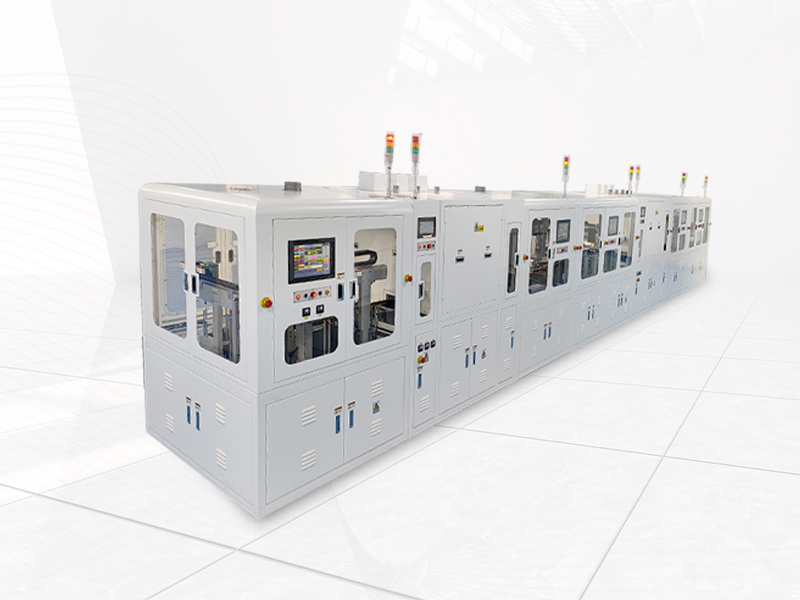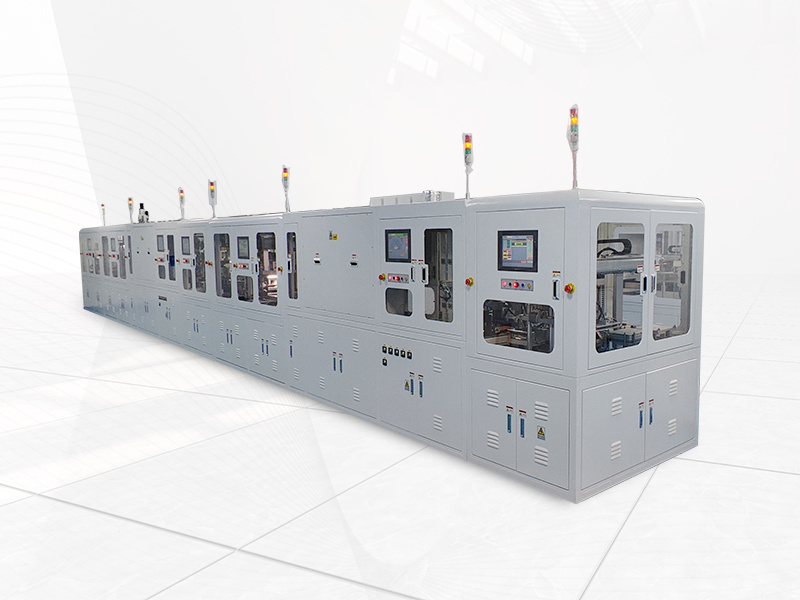Common Mistakes to Avoid When Using Automatic Dipping Machines: A Comprehensive Guide
Release time:
Jul 04,2025
Common Mistakes to Avoid When Using Automatic Dipping Machines
Using automatic dipping machines can significantly enhance productivity and quality in various manufacturing processes, particularly in sectors like coatings, textiles, and plastics. However, improper usage can lead to operational inefficiencies, increased costs, and quality defects. In this article, we delve into the common mistakes to avoid when operating automatic dipping machines, providing a detailed guide to optimize your processes effectively.
Table of Contents
1. Understanding Automatic Dipping Machines
2. The Importance of Proper Setup and Calibration
2.1 Common Setup Mistakes
2.2 Tips for Accurate Calibration
3. Material Selection: A Key Factor
3.1 Choosing the Right Coating Materials
3.2 Avoiding Incompatibility Issues
4. Temperature Control and Its Impact
4.1 The Role of Temperature in Dipping Processes
4.2 Common Temperature-Related Errors
5. Operating Procedures: Following the Manual
5.1 Importance of Adhering to Manufacturer Guidelines
5.2 Training Staff on Correct Operations
6. Maintenance: Preventive Actions to Take
6.1 Neglecting Routine Maintenance
6.2 Troubleshooting Common Issues
7. Safety Protocols: Protecting Your Workforce
7.1 Common Safety Oversights
7.2 Training for Safety Compliance
8. Conclusion
9. FAQs
1. Understanding Automatic Dipping Machines
Automatic dipping machines are essential for automating the dipping process in various manufacturing applications. These machines enhance efficiency by providing consistent and uniform coating on products, thus improving overall product quality. However, they require careful operation and understanding to avoid common mistakes that could lead to production issues.
2. The Importance of Proper Setup and Calibration
Proper setup and calibration are crucial for optimizing the performance of automatic dipping machines. Neglecting these aspects can lead to various operational challenges.
2.1 Common Setup Mistakes
One of the most frequent mistakes is failing to follow the manufacturer’s setup guidelines. Each machine model may have specific requirements regarding installation and configuration. Ignoring these can result in uneven dips, coating failures, and increased operational costs.
2.2 Tips for Accurate Calibration
Calibration should be performed regularly to ensure that the machine operates within the specified parameters. Use calibration tools recommended by the manufacturer and conduct tests to verify the accuracy of the machine settings before commencing production.
3. Material Selection: A Key Factor
Choosing the right materials for dipping processes is vital for achieving optimal results. Incompatible or substandard materials can lead to product defects.
3.1 Choosing the Right Coating Materials
Always use materials that are compatible with the product being dipped. Consult with suppliers and conduct tests to ensure that the materials will adhere properly and provide the desired finish.
3.2 Avoiding Incompatibility Issues
Incompatibility can result in issues such as peeling, blistering, and poor adhesion of the coating. Regularly review material specifications and update them as necessary to avoid these problems.
4. Temperature Control and Its Impact
Temperature plays a crucial role in the dipping process. Incorrect temperature settings can adversely affect the quality of the coating.
4.1 The Role of Temperature in Dipping Processes
Proper temperature control ensures that the coating material maintains its desired properties during the dipping process. This includes viscosity, adhesion, and drying time.
4.2 Common Temperature-Related Errors
Frequent mistakes include not monitoring the temperature closely during production and failing to account for external factors that could affect temperature stability. Implementing robust temperature monitoring systems can help mitigate these issues.
5. Operating Procedures: Following the Manual
Adhering to operating procedures outlined in the manufacturer's manual is essential for the longevity of the machine and the quality of the final product.
5.1 Importance of Adhering to Manufacturer Guidelines
Operating a machine in a manner inconsistent with manufacturer specifications can void warranties and lead to mechanical failures.
5.2 Training Staff on Correct Operations
Proper training for all staff involved in operating the dipping machine is essential. This training should include thorough understanding of operational procedures, safety protocols, and troubleshooting techniques.
6. Maintenance: Preventive Actions to Take
Regular maintenance is key to ensuring smooth operation and extending the lifespan of automatic dipping machines.
6.1 Neglecting Routine Maintenance
Neglecting routine maintenance can lead to wear and tear, resulting in costly downtimes and repairs. Create a maintenance schedule that includes regular checks and servicing.
6.2 Troubleshooting Common Issues
Equip your team with troubleshooting skills to quickly address common issues that may arise during operation. Familiarity with the machine's components and functions can minimize disruptions in production.
7. Safety Protocols: Protecting Your Workforce
Ensuring workplace safety is paramount when operating automatic dipping machines. Neglecting safety protocols can lead to accidents and injuries.
7.1 Common Safety Oversights
A common oversight is failing to use personal protective equipment (PPE) when operating dipping machines. Regularly remind staff of the importance of PPE to prevent exposure to hazardous materials.
7.2 Training for Safety Compliance
Conduct regular safety training sessions to reinforce best practices and ensure compliance with safety regulations. Encourage an open dialogue about safety concerns to create a culture of awareness within the workplace.
8. Conclusion
In conclusion, avoiding common mistakes when using automatic dipping machines is essential for enhancing productivity, ensuring product quality, and maintaining a safe working environment. By focusing on proper setup, material selection, temperature control, adherence to operating procedures, regular maintenance, and rigorous safety protocols, manufacturers can optimize their operations and achieve consistent results.
9. FAQs
1. What are the primary advantages of using automatic dipping machines?
The primary advantages include increased efficiency, consistent coating quality, reduced labor costs, and the ability to handle large volumes of products.
2. How often should I calibrate my automatic dipping machine?
Calibration should be performed regularly, ideally at the start of each production cycle or after any significant adjustments to the machine.
3. What are the signs of improper setup of a dipping machine?
Signs include inconsistent coating thickness, product defects, and operational errors during the dipping process.
4. How can I ensure the safety of my workers while using automatic dipping machines?
Implement comprehensive training programs, enforce the use of PPE, and conduct regular safety audits to ensure compliance with safety protocols.
5. What maintenance tasks should I prioritize for my dipping machine?
Prioritize cleaning the machine, checking for wear and tear on components, ensuring proper lubrication, and conducting functionality tests on critical parts.
By understanding and avoiding these common pitfalls, manufacturers can leverage the full potential of automatic dipping machines, leading to improved production outcomes and enhanced product quality.
Previous









